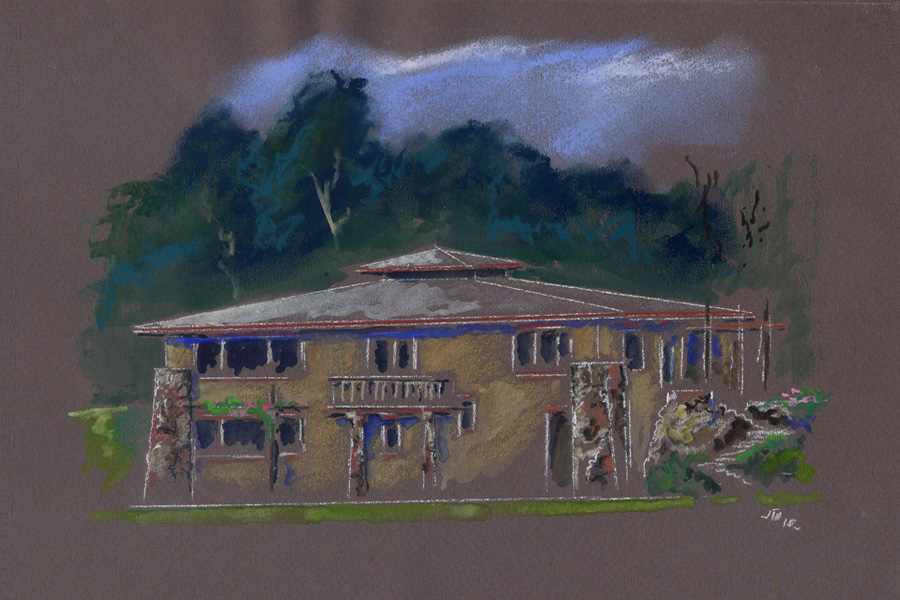
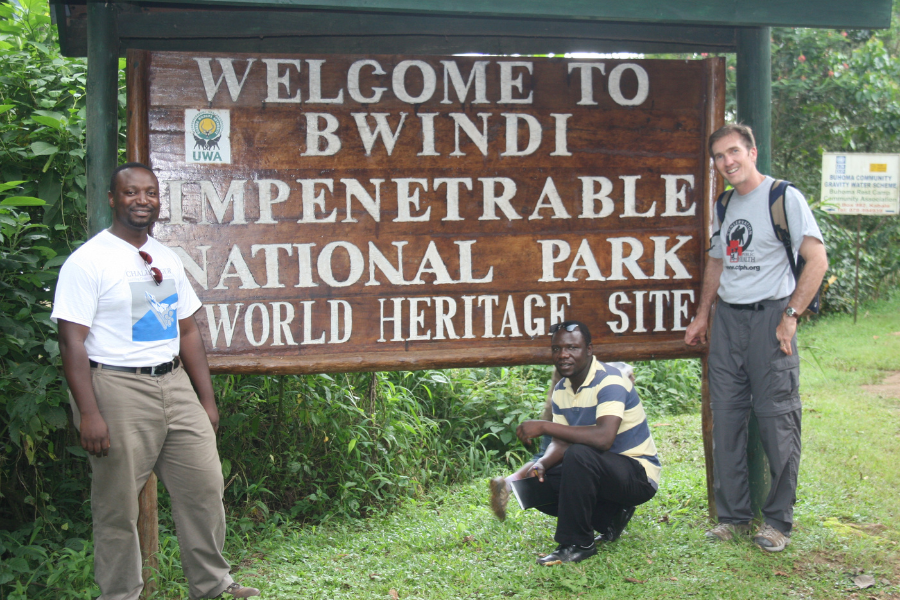
Back in 2010, our Principal Architect, Drew Hubbell, traveled to Bwindi, Uganda to work collaborate with Conservation Through Public Health (CPTH). CPTH is a grassroots, non-profit organization found in 2002 by Ugandans. Bwindi Impenetrable National Park is home to an estimated half of the world’s critically endangered mountain gorillas, and is surrounded by one of the highest human population densities in Africa. These remote human settlements have very limited access to basic modern health services and health education. This adds a special challenge to conservation efforts because humans share more than 98% of their genetic material with the great apes, so many diseases can jump between the species. CPTH works to prevent and control disease transmission while cultivating a winning attitude toward conservation and good public health in local communities.
Together, Drew and the leaders of CPTH, created a schematic design for a new Gorilla Research Clinic. The clinic was to be located in Buhoma, Bwindi Impenetrable National Park’s main tourist site. This centralized location would place CTPH closer to the gorillas, allowing closer tracking of the gorillas and collecting of more research material. The location would also provide housing for staff member, and offer facilities to accommodate ecotourism, a valuable income source for local communities that helps conservation education efforts in the area.
The schematic design heavily influenced the final design of the clinic – both with its use of sustainable strategies and local materials. The sustainable design features that were incorporated into the schematic design included:
- Follows existing landforms, minimizing site disturbance and grading
- Passive ventilation and lighting systems
- Narrow footprint optimizes daylighting and natural ventilation.
- Solar shading
- Roof-mounted photovoltaic panels
- Solar thermal hot water uses sun instead of electricity to heat water
- Rainwater catchment
- Water filtration for drinkable water and to reduce the need for disposable plastic bottles
- Local materials
- Durable materials
- Metal roof with recycled steel content, reflective color limits solar heat gain
- Plastered masonry walls provide thermal mass
- Indigenous artwork and patterns
The clinic has now expanded to a larger Gorilla Health and Community Conservation Center with a panoramic view of Bwindi forest, where CPTH give tourists a behind the scenes tour of gorilla conservation through explaining our programs including gorilla health monitoring, community health and livelihoods.
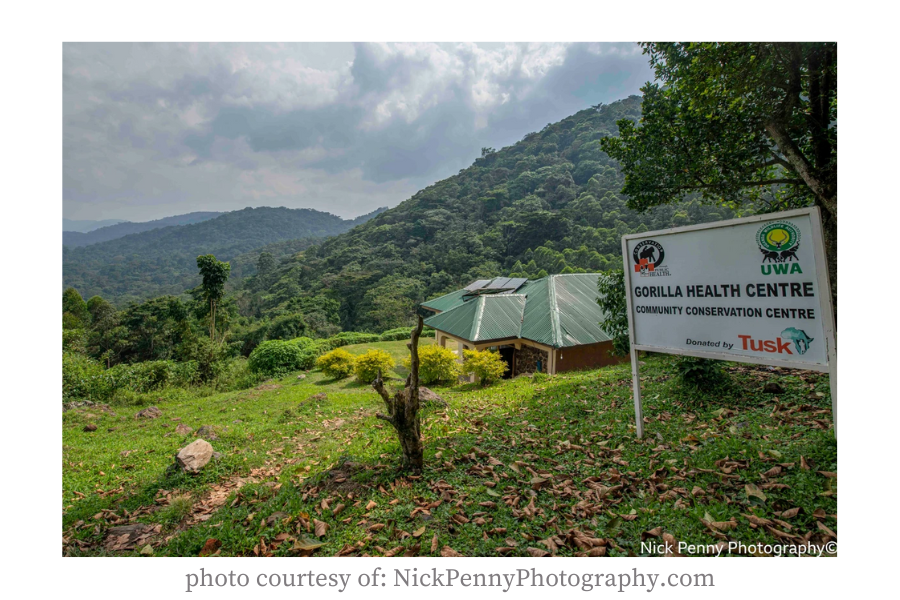
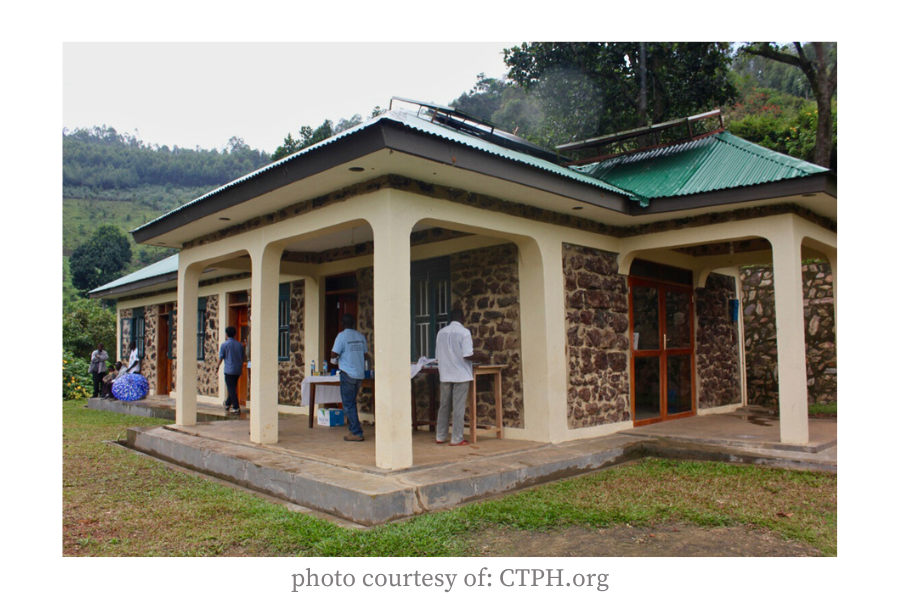
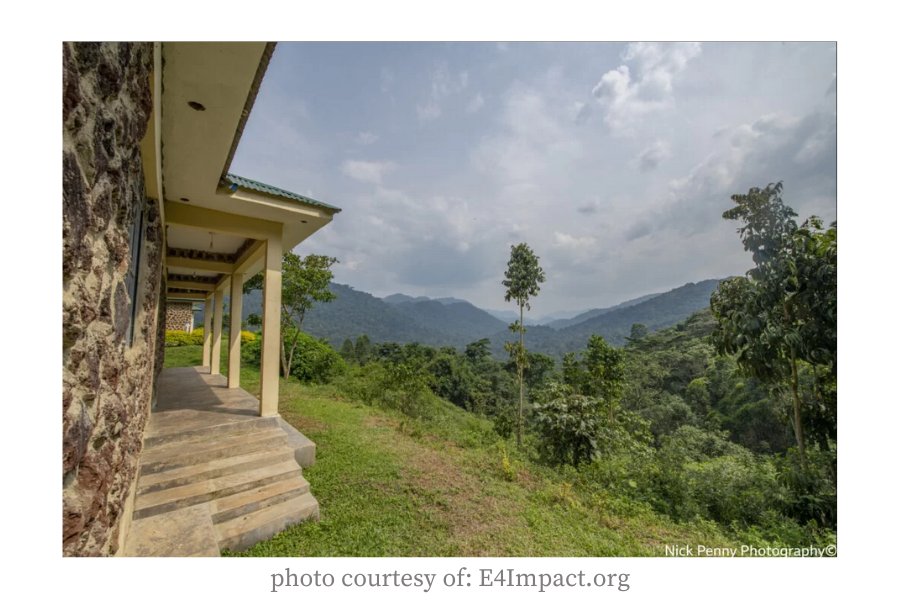




Leave A Comment